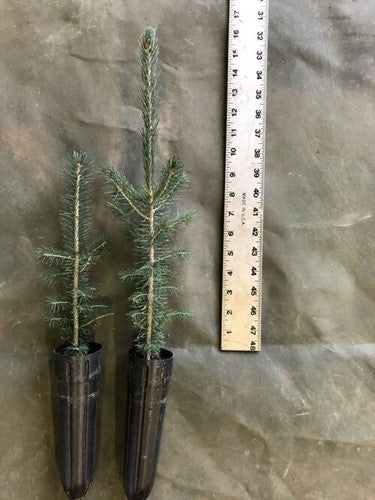Bareroot Plant Material
Black Hills Spruce
Black Hills Spruce
Couldn't load pickup availability
25 plants per unit
Picea glauca 'Densata", or Black Hills spruce is a type of white spruce native to the Black Hills of South Dakota. It is not native to Kansas. It can get 20' to 40' tall in Kansas. While it is a slower growing species it grows as a dense evergreen. It grows best in full sun. Black Hills spruce is tolerant of deer.
Leaves, Stems and Fruit
Black Hills spruce needles are 1/2" to 3/4" long with a bright green to blue-green color. Branches grow close together creating a dense, perfectly cone shaped tree. The cones are 1" to 2 1/2" long.
Use
Windbreaks - This tree can be used for the evergreen tree component of windbreaks.
Christmas Trees - Black Hills spruce can make a beautiful Christmas tree.
Adaptation and Soil
Black Hills spruce is adaptable to the Northern half of the state with medium moisture requirements. It grows in a broad range of soils, but may struggle on poorly drained and humid sites. It can tolerate hot days but does best in areas with cool nights.
Spacing
Black Hills spruce are spaced 8 to 12 feet within a row and 12 to 18 feet between rows.
Culture
Two-year-old bare-root and container-grown seedlings are used in conservation plantings. Typically the seedlings grow very little in height until the second or third year. During the establishment period, supplemental watering and control of competing vegetation will aid survival and early growth. Large, fast growing deciduous trees should be spaced far enough (20 to 40 feet) between rows to prevent shading the spruce.
Pests
No serious insect or disease problems. Susceptible to needle and stem rust, canker, trunk and root rot. Yellow-headed spruce sawfly, spruce budworm and eastern spruce beetle are problems in some areas. Spider mites are common.



